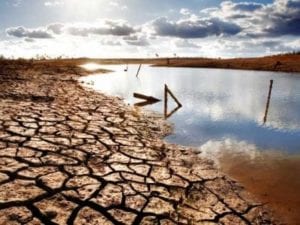A new report released today by WWF-South Africa (WWF-SA) and WWF-UK, in collaboration with Carbon Tracker, Trucost, SinCo and the Government Employee Pension Fund (GEPF), shows that institutional investors are failing to systematically factor in climate change and freshwater risks when making investment decisions.
As a result, there is a risk that the listed bonds and equities of companies in high carbon sectors are mispriced, which could lead to financial instability when the market recognises the realities of resource constraints owing to water scarcity and greenhouse gas (GHG) emission limits, and re-prices these securities accordingly. “Making risk-adjusted returns is at the heart of the investment industry. Water scarcity and climate change are material risks yet our research shows that many investors are not taking these risks into account. This may result in future investments and financial market stability being severely compromised”, says WWF-SA’s Sustainable Business Programme Manager, Malango Mughogho. Constraints on returns that investors face from investments in South Africa’s bond and equities markets as a result of climate policies and water scarcity include:
- A potential limit on revenues earned by the sale of coal as a result of regulated limits on GHG emissions. Carbon Tracker’s research shows that listed coal reserves for domestic use on the JSE exceed a carbon budget for coal related sectors by 7.2GtCO2e
- An increase in the costs faced by underlying company investments as a result of the planned carbon tax. This is particularly relevant for investors in the carbon- and energy-intensive basic resources and energy sectors. Trucost’s research shows that carbon liabilities could cut Eskom’s interest coverage by 22% and that carbon costs could be material to many companies in the ALSI: for 55 companies in the nine highest-emitting sectors, carbon costs for taxable operational emissions and 50% of carbon liabilities from electricity-related emissions would equate to 7% of combined earnings on average.
- An increase in the costs faced by underlying company investments as a result of companies being forced to internalise the full environmental cost of water. According to Trucost’s calculations, the external value of water used by operations and first-tier suppliers of JSE top 100 companies, reflecting levels of scarcity in South Africa, could total more than R56 billion ($6.8 billion) annually.








